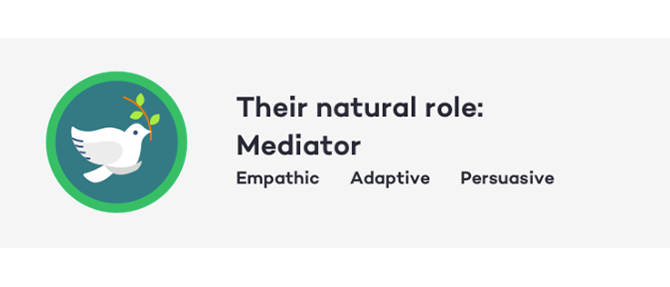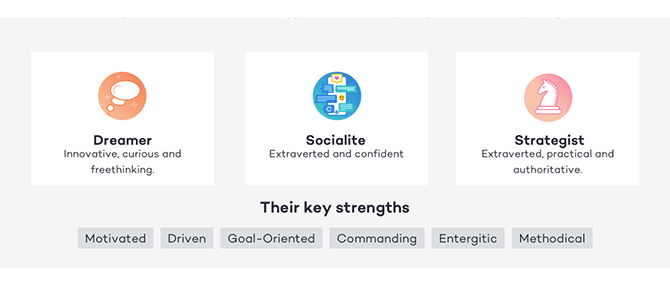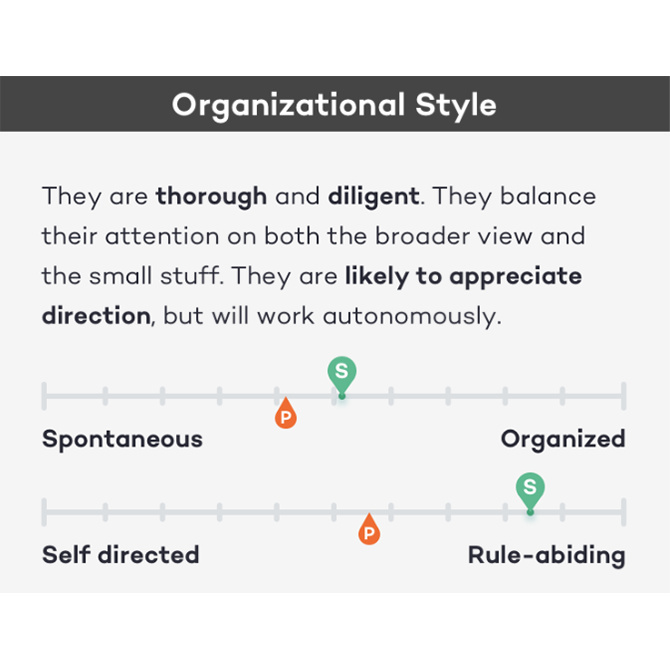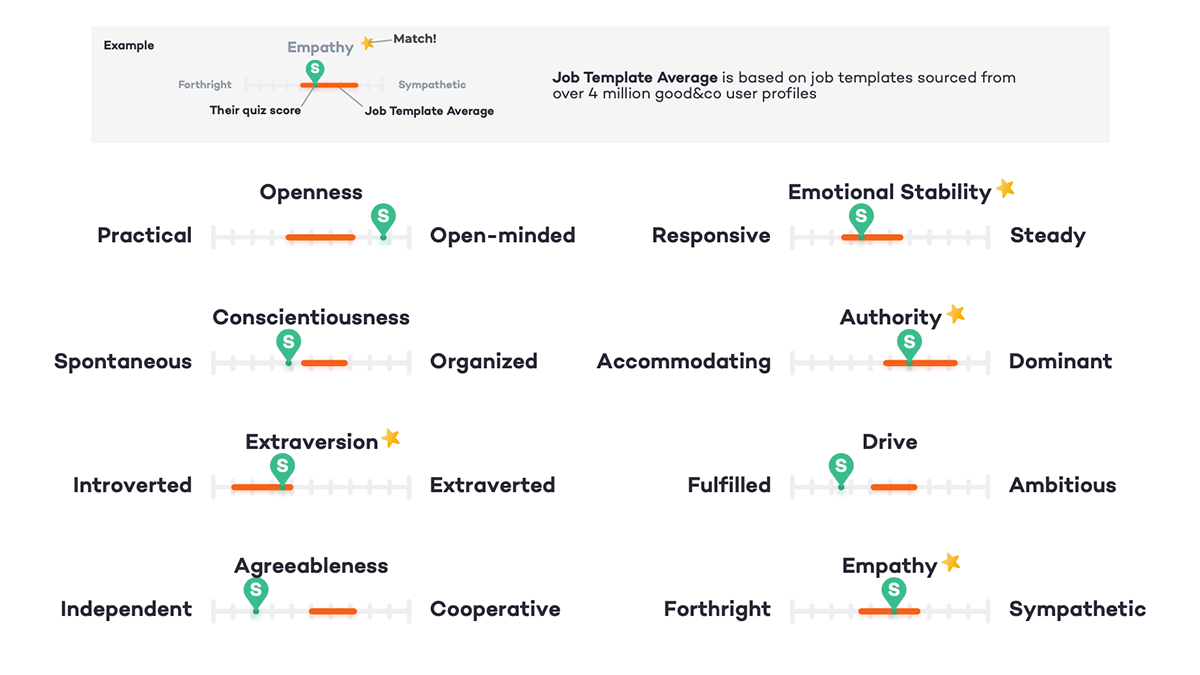How to use and interpret the TrueYou report
For recruiters, the TrueYou report can share insight into a candidate’s personality, working style and key strengths, helping you to better assess a candidate's fit for a role. Read this guide to learn how to utilise the TrueYou report as part of your hiring and assessment process.

The TrueYou report provides recruiters with insight into a candidate’s personality. You can quickly find out the characteristics that candidates hold and how they are likely to behave at work. Are they rather practical, or a creative thinker with countless new ideas? Do they prefer to work independently, or do they thrive in a collaborative environment? Having this information upfront allows you to have a much more informed conversation in an interview, and give you the opportunity to gather more insight into their strengths alongside areas of development to find out whether a candidate is the right fit for the role.
Hiring for personality
When hiring for personality, it’s important to understand that it’s not about repeatedly hiring the same personality type (especially when hiring into the same team and/or company). Our team can provide you with a template from our library of hundreds of job profiles (based on data from over 4 million users), which shows you how a typical person in that role looks. Your team may have several people like this already, so you might want to look at other traits that could be missing to add value and diversity of thought. In this case, use the template as a starting point but think of additional desired traits you would like to see in a candidate. For more information about why personality matters in the hiring process and how to best utilise our personality assessment in the recruitment process see here.
Sections of the TrueYou report
FitScore/Accuracy
If you have chosen a job template, the Fitscore/Accuracy section shows you the candidate’s fit to the job template. You can also see how many personality quizzes the candidate has taken. The first quiz provides the minimum level of accuracy. There are 5 quizzes in total and the more quizzes a candidate has completed, the more accurate their results. If you didn’t choose a job template, you will only see the accuracy information here.
The natural role
This is the role a candidate would take on naturally in a team, independent of other team members. There are 12 possible roles a candidate could adopt, dependent on their individual characteristics.

Who is ‘X’?
These are a candidate’s three closest matching personas based on their individual characteristics, including the persona’s key strengths. We’ve calculated 16 personas in total and we assign three to each candidate, as we believe that people are too complex to just fit into one category. Our blending of 3 personas out of 16, provides over 500 combinations of personality profile.

Key insights
This section shows you how the candidate scored on each factor of our 8-factor model. This includes the key traits of the widely used ‘Big 5’ personality model and three additional factors assessing highly relevant workplace attributes: Emotional Intelligence (Empathy), Drive, and Authority. If a job template was chosen by you as a recruiter, the candidate is compared to that template, otherwise, the candidate is compared to over 4 million users from our database. Every factor is ranked on a scale, e.g., a person scores somewhere between being practical or open to new experiences, rather than either being open or not open.
What makes ‘X’ unique
Whereas the key insights show results about the general personality of a person, this section shows a candidate’s work styles and how they are likely to behave in the workplace. The results here are based on combinations of characteristics from different factors of the 8-factor model. Again, you can see how the candidate compares to the job template or our wider candidate database (referred to as ‘general population’ on the report).
 Interview questions
Interview questions
The interview questions provided are chosen based on a candidate’s personality quiz results. The areas chosen are those where the candidate differs most from the job template/our wider candidate database, where we think it’s worth diving in a little bit deeper.
The 8 factor model of personality types
- Openness refers to inquisitiveness, aesthetic sense, and willingness to try new things. At work those high on openness may have a greater proclivity towards creativity. Those low on openness may be more conventional, practical, and grounded.
- Conscientiousness refers to how industrious, efficient, and orderly one might be. At work, highly conscientious people may prefer structure and routine. Those who are low on this trait may be more comfortable with a flexible, spontaneous approach.
- Extraversion refers to levels of social assertiveness and social requirements (i.e., our proclivity towards engaging or avoiding social interaction). Extraverts may get their energy from others, whereas introverts may find too much socialising exhausting. At work, this may have implications for team or independent working.
- Agreeableness refers to the inclination towards maintaining social harmony. Highly agreeable people are polite, compliant and rule abiding. At work, agreeable people won’t rub people up the wrong way so much, but they may not challenge people when it’s appropriate to do so.
- Emotional stability refers to the propensity for negative emotion and emotional volatility. At work, emotionally stable individuals may be more resilient. Those who don’t express much emotion however may come across as colder and unsympathetic. It’s important to note that while someone may score higher on volatility naturally, they may have learned to regulate their feelings.
- Authority refers to someone’s approach to ambiguity and control. At work, those high on authority may need a lot of control over their tasks and projects and are less keen on tasks that are not defined clearly or change continuously. People high on authority are also more likely to want to be in charge.
- Drive refers to how ambitious, competitive and achievement striving someone is. At work, those high on drive may show greater commitment to seeking out new challenges but may find it harder to relax. They may struggle to understand and collaborate with people who don’t show the same levels of ambition and commitment.
- Empathy refers to how much we feel the emotions of others (emotional) and how much we can rationalise and understand the emotions of others (cognitive). At work those who score high on empathy can be more persuasive communicators. The drawback of someone being too emotionally empathetic is that they may overextend themselves in helping others without out paying attention to self-care.
Using the TrueYou Report – an example
Imagine you are hiring and your candidate scores the below across the 8 personality factors.

As you can see, the candidate matches the job template on Authority, Extraversion, Empathy and Emotional Stability – that’s great! Taking a closer look at the remaining factors, we can see:
- The candidate is less agreeable than the typical person in this role. This means they are more likely to be independent and likely to question some rules.
- The candidate is slightly more organized than the job template suggests, which means they are methodical, careful and enjoy working in a structured environment.
- They are more open-minded, indicating that they are overall more creative than needed for the role. They may though come up with innovative ideas and instigate new ways of doing things.
- The candidate is slightly less driven than the template suggests, meaning they are less competitive and not overly driven by challenges but are a great team-player and will work collaboratively.
With this information, you can now think about which areas you want to spend more time focusing on during an interview with the candidate. If, for example, the company environment is rather spontaneous and provides little routine, you may want to have a conversation around this to understand how a more structured, methodical candidate would find this environment. Ask the candidate how they would cope in an environment like this, have they worked in a similar situation beforehand? What are their strategies? For suggestions on which areas to explore with that specific candidate, have a look at the interview question section of the report (see above).
Always try to look at the candidate’s personality as a whole, rather than focusing on a single factor. In the example above you may think at first the candidate is too creative and free-thinking, rather than being practical (Openness). However, the candidate is also very diligent and organized, which in combination may work great for the role.
This article was written by Elaine White, Ph.D. and Tanja Winkler, MSc.
- Note: Our personality test has shown to be bias-free across gender, age, ethnicity, sexual orientation and neuro-diversity, for more info click here.
